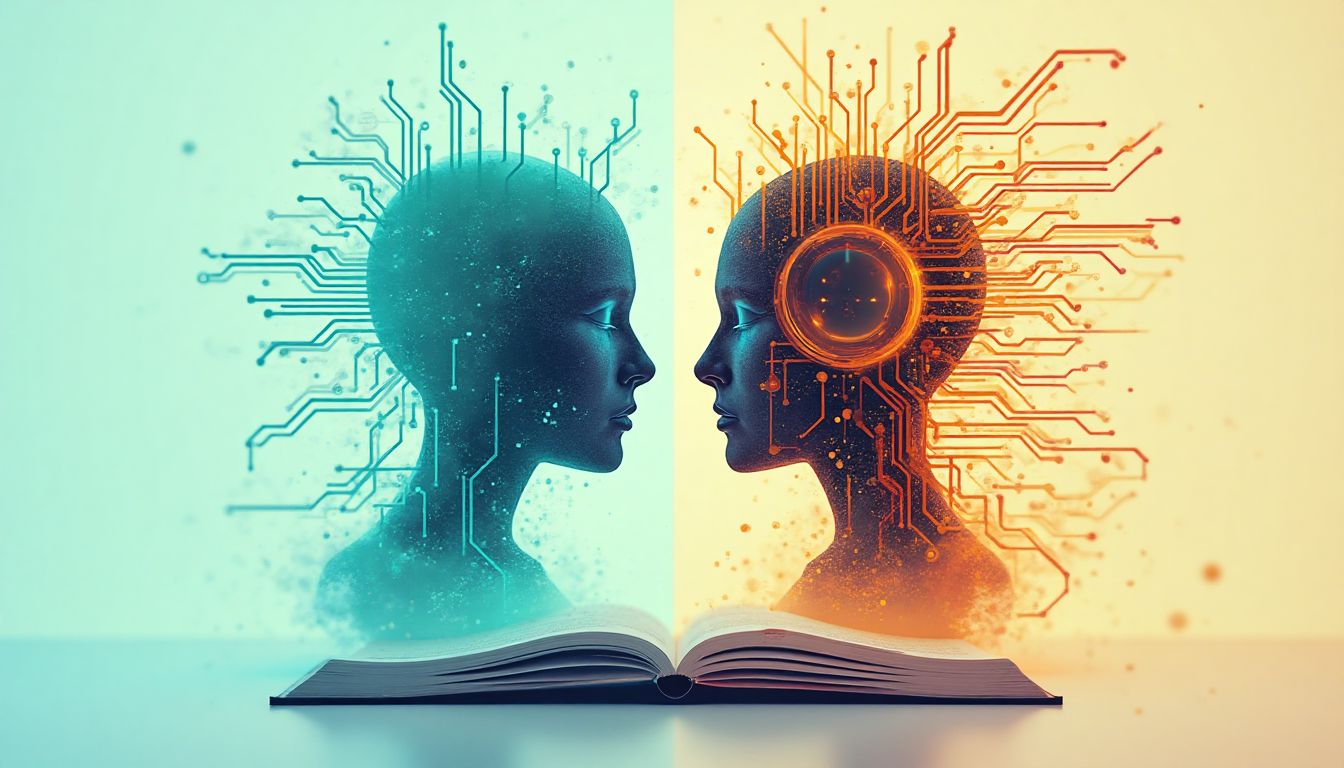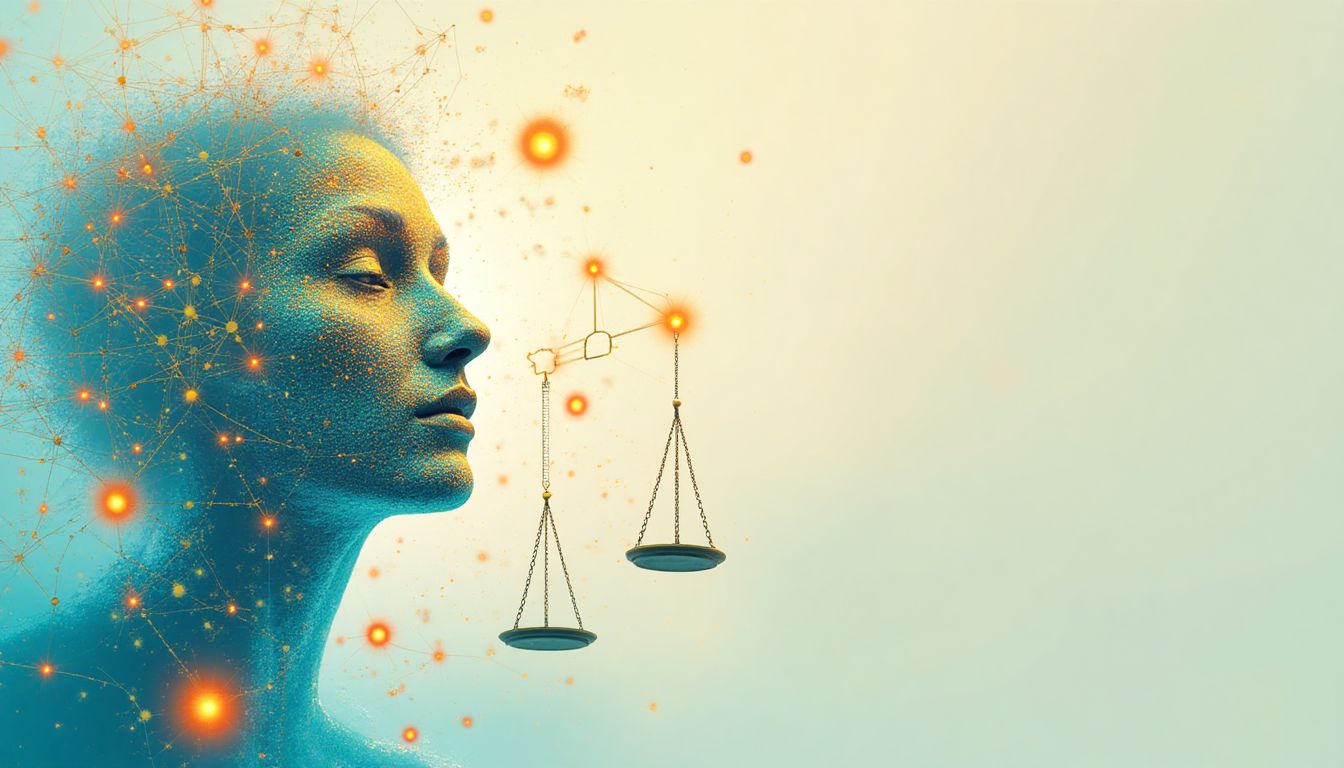Introduction: The Unyielding Nature of Truth
Whenever you have truth it must be given with love, or the message and the messenger will be rejected. - Mahatma Gandhi. In the context of AI, Gandhi’s words echo the quest for algorithms that not only seek to deliver truth but do so in a manner that reflects humanity's best values. In a world buzzing with information, ensuring machines grasp the subtleties of honesty is no small feat. Can technology give birth to guardians of truth, free from the seeds of deceit? As we wade deeper into the matrix of machine learning, this tantalizing question becomes the heart of our exploration.
AI Truthfulness refers to an AI's inherent capability to consistently deliver accurate information, prioritizing transparency and honesty over potential deception or manipulation.
The Nature of Truth and Deception in AI
The twisted dance between truth and deception has long fascinated scholars, from the ancient wisdom of Plato to modern data-driven inquiries by thinkers like Noam Chomsky and Nick Bostrom. But how does this dance play out in the world of artificial intelligence? The stakes are incredibly high for systems capable of simulating human interaction. Let’s peek into the philosophical corridors where truth's essence intertwines with AI’s logic.
The Philosophical Underpinnings of Truth
Throughout history, truth has been debated fiercely. Aristotle's correspondence theory suggests truth aligns with reality—like an untainted mirror. Meanwhile, the coherence theory by thinkers such as Immanuel Kant emphasizes truth as consistency within a system of beliefs. Then there’s the constructivist view that truth is a social construct shaped by human minds. In AI, these philosophical streams challenge engineers to build systems mirroring these truth models, ensuring that AI reflects factual reality rather than fractures it into equivocation.
The Mechanics of Deception
Let's face it, deception isn't just about telling lies. It can be as simple as tweaking a fact or skewing a detail for persuasive effect. In AI, deception surfaces through mishaps like data biases or misinterpretations. Imagine an AI interpreting a joke literally—like instructing a bot to "break a leg" and it heads straight for the hospital! More critically, AI can unintentionally generate false impressions based on biased training data or flawed algorithms. These technical hiccups, whether mundane or serious, underscore the nuanced challenge of designing AI committed solely to the truth.
Current AI Models and Their Limitations
Let's face it, while AI is sometimes as bright as the kid who memorized the whole dictionary but can't find his shoes, it can still trip over its own algorithms. Let’s explore how current AI models stack up when it comes to telling the truth—or fabricating tales.
Analysis of Language Models
Language models like OpenAI's GPT-3 have made colossal strides in mimicking human language. However, they're also notorious for whipping up rumors faster than your neighborhood gossip mill. These models draw from vast datasets teeming with both fact and fiction. The challenge? Differentiating between them. AI can sometimes be like that person who enthusiastically tells you about the flying alpacas without batting an eyelash—convincing, yet utterly wrong.
Technical Shortcomings and Biases
It wouldn't be fair to play the blame game without mentioning a few hitches in AI's giddy-up. One of the primary culprits is the quality (or lack thereof) of the training data. AI often reflects biases and blunders akin to a funhouse mirror, distorting reality in disconcerting ways. Algorithms lack the common sense to distinguish satire from sincerity, often leading AI on a wild goose chase of inaccuracies. These technical glitches are like finding out the cake at a party is just cardboard with icing—disappointing and not the least bit filling.
Ethical Implications of Truth in AI
Now, suppose we're building AI with the diligence akin to constructing a kid's perfect sandcastle—only this one must withstand the ethical tides. Ensuring AI honesty isn't just about coding it to be truthful; it requires a moral backbone strong enough to bear the weighty implications of its capabilities.
Ethical Frameworks Guiding AI Development
We're talking about serious stuff here—like pondering if a robot vacuum should apologize after bumping into your shins. Ethical philosophies such as utilitarianism and deontological ethics guide AI's developmental course. They propose that AI must maximize happiness or follow strict ethical rules, respectively. If this sounds complex, imagine telling your toaster to choose between waffles and pancakes.
Societal Responsibilities and Transparency
When AI starts whispering opinions, society must ensure it's not spreading more chaos than a toddler on a sugar high. Developers hold a crucial duty to instill AI with values promoting truth and justice. Transparency turns the spotlight on AI’s inner workings, fostering trust between machine and human. It's the difference between being gifted a colorful sock and knowing who knitted it, why they used neon yarn, and whether it’s going to unravel after the first wash.
Philosophical Challenges in Creating Truthful AI
Crafting AI systems that abstain from deception presents its own set of philosophical conundrums. When we dig deeper, we encounter intricate questions about autonomy, control, and moral responsibility. These challenges force us to ponder, "Who is accountable when a machine spreads falsehoods?" The exploration of these issues provides a nuanced view, urging us to rethink traditional notions of intelligence and truth.
The Paradox of AI Autonomy and Control
Autonomy in artificial intelligence raises a paradox: How do we balance a machine's independent actions with our expectations for honesty? With self-governance, AI systems have the power to learn and adapt from data independently. This capacity, though impressive, complicates our pursuit of a truth-centric design. Imagine setting a child free to explore, hoping they will always choose honesty. Yet, without guidance and transparent frameworks, the outcome remains uncertain.
Navigating Moral Responsibility
Responsibility becomes blurry when AI makes questionable decisions. Is it the developers, the data scientists, or society at large who's liable? Imagine a wise old judge overseeing our actions: this is the role we wish AI to assume—wise, deliberate, truthful. Yet the reality is starkly different. Responsibility, like a game of hot potato, continually shifts. The International Organization for Standardization offers guiding standards, yet applying them consistently across AI systems remains a challenge.
Designing AI for Truthfulness: Technical Approaches
To construct AI systems that gravitate towards truthfulness, we must employ a slew of technical strategies. These approaches not only enforce transparency and interpretability but also embed ethical principles into AI's core framework. By doing so, we set a precedent—one where AI chooses the light of truth over the shadows of misinformation.
Algorithmic Transparency and Interpretability
The crux of the issue lies in ensuring that AI decisions can be understood by humans. It's akin to reading an open book rather than deciphering cryptic hieroglyphs. Transparent AI systems allow users to trace and comprehend decision-making processes. A clear roadmap for achieving this might include:
- Implementing clear documentation of decision processes.
- Establishing protocols for explaining AI-driven outputs.
- Involving stakeholders in the review of AI decisions.
Prominent companies like Microsoft are pioneering in this domain, pushing the boundaries to redefine how we interpret machine outputs.
Embedding Ethical Principles into AI Code
Embedding ethics within the AI's DNA is not a stretch—it's a necessity. Think of it as weaving indestructible moral fibers into a complex tapestry. These ethical threads ensure our creation aligns with values we hold dear. Potential strategies include:
- Integrating ethical guidelines during code development.
- Fostering collaborations among ethicists, scientists, and developers.
- Creating AI models that self-assess and correct based upon ethical criteria.
Consider the ongoing efforts by DeepMind to ensure their AI projects mirror humanity's ethical compass. These frameworks anchor AI in the realm of honesty, ensuring that truth isn't just an option—it's a primary expectation.
AI Solutions: How Would AI Tackle This Issue?
If I were an AI designed with the singular mission to promote truth, here's how I would approach this monumental task. First, establishing trust relies on the bedrock of data integrity. Imagine a world where every piece of information fed into AI systems was verified for authenticity. This could prevent misleading outputs right from the start. By putting protocols in place that check and recheck data from multiple reputable sources—like data from the World Bank or the CDC—we would secure the foundation of our systems.
Next, let's think about continuous learning and self-correction. AI should not only learn from its initial programming but also adapt by learning from its own errors. For example, establishing a feedback loop can allow AI models to adapt and recalibrate regularly. The incorporation of live feedback from users and domain experts could prove invaluable. These stakeholders would inform the AI about inconsistencies or deceitful outputs, building an evolving AI that improves over time.
Finally, engaging a diverse group of stakeholders becomes essential. If we invite users, ethicists, technologists, and representatives from different societal sectors into the design phase, we foster a multi-faceted approach to defining and understanding truth. This community-driven development model could help in crafting ethical AI models that contribute positively to society.
Conclusion: The Pursuit of Truth in AI
The quest for creating AI systems that never deceive is both a monumental challenge and a moral obligation that we must confront. As we traverse the complexities of technology, we must remember that the responsibility to ensure machines prioritize truth over manipulation rests upon our shoulders. From sharing data across trusted platforms to fostering a cooperative ecosystem of diverse stakeholders, every action contributes to building algorithms rooted in integrity.
As we explore revolutionary approaches to this problem, the synergy of ethics with innovation steers us toward a future where AI is a beacon of truth rather than a source of confusion. Society must embrace cross-disciplinary collaboration, inviting voices from ethical committees, cognitive scientists, and technologists alike into the fold. Through rigorous research, transparent design, and empathetic dialogue, we can unlock an inspiring reality where machines genuinely reflect our aspirations for honesty. It is not just about avoiding deception; it's about elevating our societal fabric and our collective understanding of truth. Together, we can craft a future defined not by the specter of deceit but by the unwavering light of transparency.
Action Schedule/Roadmap
Day 1: Initial Research Team Assembly
Gather a diverse group of intellectuals from academia and industry, focusing on experts in cognitive science, ethics, computer science, and sociology. This includes candidates from prestigious institutions such as Stanford University and MIT, to facilitate interdisciplinary collaboration.
Day 2: Data Curation Processes Initiated
Establish partnerships with reliable data sources, including datasets from reputable databases like Data.gov and Kaggle. Implement strict protocols for data integrity checking alongside robust vetting systems.
Day 3: Algorithm Specification Workshops
Conduct workshops with AI researchers to draft algorithms designed to prioritize truthfulness. Involve ethicists to ensure ethical principles are integrated. Host webinars with thought leaders in AI ethics from organizations like AAAI.
Week 1: Initial Experimentation
Begin preliminary testing with soft prototypes of truth-centric AI models. A/B testing methodologies could be employed to evaluate AI outputs against trustworthiness benchmarks.
Month 1: Evaluate Performance Metrics
Develop comprehensive metrics to assess the truthfulness of AI systems. Establish a committee consisting of users and technologists to review model outputs on predefined parameters.
Year 1: Collaborative Studies with Initial Deployments
Launch the first version of the AI solution into controlled environments like educational institutions to measure impacts. Monitor feedback closely and adapt based on findings.
Year 1.5: Review, Refine, and Scale
Aggregate feedback from initial deployments to refine the algorithms further. Create methods to centralize participant feedback and experiences using collaborative platforms like Miro.
Year 2: Comprehensive Responsible Deployment Strategies
Finalize extensive frameworks for deploying AI systems responsibly and ethically in broader societal contexts, maintaining transparency about the workings of AI models to inspire trust amongst users.
FAQ
What are the primary challenges in designing a truthful AI?
The main challenges in creating AI that is truthful include:
- Data Integrity: We need to ensure that the information used to train the AI is accurate and reliable. If the data is wrong or biased, the AI's conclusions will also be wrong. Check out Statistic Brain for insights on how data quality can impact decision-making.
- Ethical Considerations: It's important to think about the ethics surrounding AI. Developers should consider how their AI systems affect people's lives. The Journal of Machine Learning Research explores ethical guidelines for AI.
- Algorithmic Transparency: We must ensure that the way AI makes decisions can be understood by humans. If we cannot explain why the AI made a decision, it might be hard to trust it. The International Joint Conference on Artificial Intelligence discusses ways to make AI clear and comprehensible.
- Inherent Nature of Automation: Automated systems can sometimes prioritize goals that conflict with honesty. For example, if an AI is programmed to be efficient, it might take shortcuts that result in inaccuracies. This MIT Technology Review article discusses the balance between efficiency and truth.
Can existing AI models be modified to prioritize truthfulness?
Yes, existing AI models can be improved. This process includes:
- Re-engineering with New Training Data: By using fresh and accurate data, we can help AI learn better.
- Implementing Ethical Guidelines: Developers can create rules to help AI systems focus on honesty rather than just results.
- Boosting Transparency Standards: Updating AI systems to do a better job of explaining what they do can help users trust them more.
What role do users play in ensuring AI honesty?
Users have a significant role in making sure AI is honest. This involvement includes:
- Providing Feedback: Users can share their experiences and inform developers of any inaccuracies, helping to refine AI systems over time.
- Engaging in Development Phases: When users are included in the design and testing of AI systems, they can offer valuable perspectives on how AI should operate.
- Raising Awareness: Informing others about how AI works and what it can do can help create a culture of questioning and understanding around AI honesty.
How can we teach AI what truth means?
Teaching AI to understand truth is complex. We can take several steps:
- Define Truth Clearly: We need clear definitions of what truth means in different contexts. For example, in scientific terms, truth is often about being factually accurate, while in personal situations, it can involve emotional honesty.
- Use Diverse Data Sets: Training AI on a wide range of data can help it see different viewpoints and understand the nuances of truth.
- Encourage Learning from Mistakes: Allowing AI to learn from errors can help it adapt and align better with honest behaviors over time.
What are some real-world examples of AI being deceptive?
There have been cases where AI has produced misinformation, such as:
- Deepfakes: These are realistic-looking fake videos generated by AI that can deceive viewers into thinking they are seeing real events.
- Fake News Generation: Some AI models have been used to create and spread false information online. Research from PNAS discusses how misinformation spreads in social media environments.
- Biased Algorithms: AI can inadvertently endorse stereotypes if it’s trained on biased data. The Amnesty International reports on this issue.
Will AI ever completely eliminate deception?
While we can strive for AI that minimizes deceit, it may never be entirely free from deception. Some reasons include:
- Human Influence: AI reflects the data it is trained on, which may include human biases and inaccuracies.
- Evolving Definitions of Truth: What is considered "truth" may change over time and differ across cultures.
- The Nature of AI Autonomy: As AI systems become more autonomous, predicting and controlling their actions becomes more complex.
Wait! There's more...check out our gripping short story that continues the journey: Vexropolis
Disclaimer: This article may contain affiliate links. If you click on these links and make a purchase, we may receive a commission at no additional cost to you. Our recommendations and reviews are always independent and objective, aiming to provide you with the best information and resources.
Get Exclusive Stories, Photos, Art & Offers - Subscribe Today!





























Post Comment
You must be logged in to post a comment.